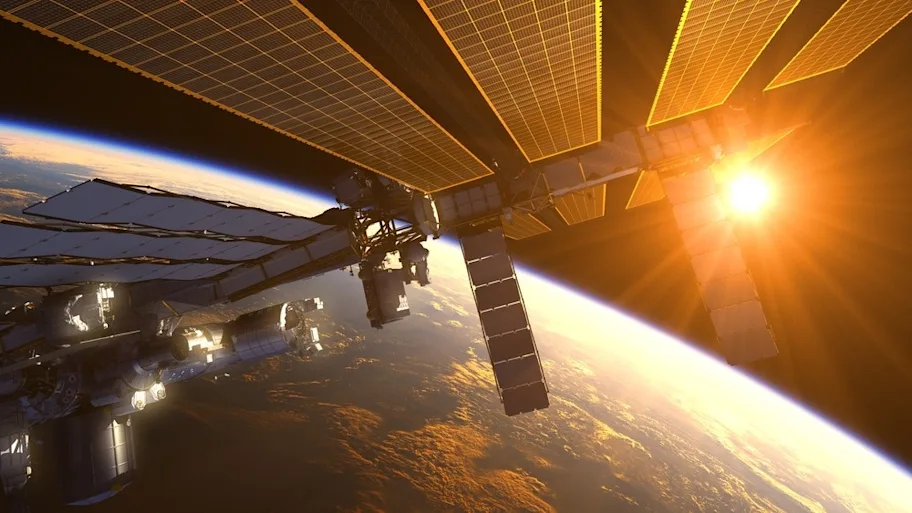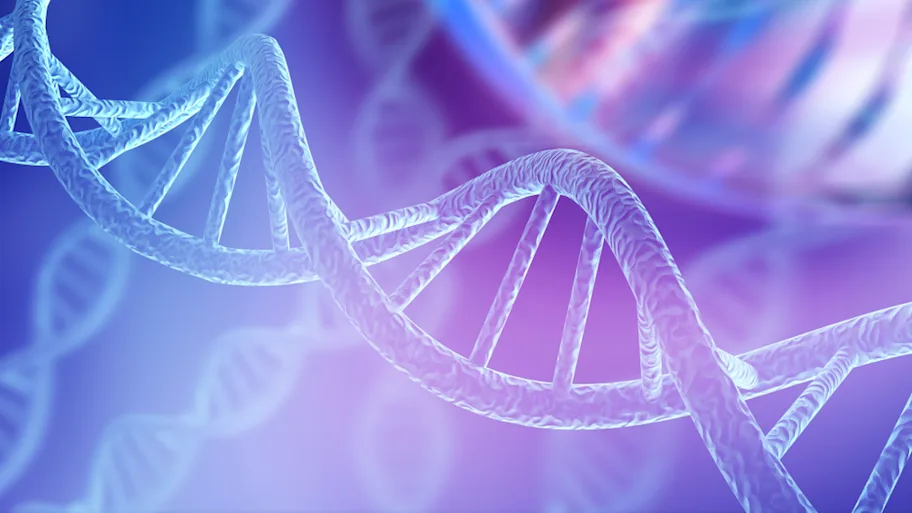
- Science news
- Featured news
- Dormant viruses activate during spaceflight – NASA investigates
Dormant viruses activate during spaceflight – NASA investigates

Virus reactivation rates increase with spaceflight duration and could present a significant health risk on missions to Mars and beyond. Image: Shutterstock.
The stress of spaceflight gives viruses a holiday from immune surveillance, putting future deep-space missions in jeopardy
— by Matthew Prior, Frontiers science writer
Herpes viruses reactivate in more than half of crew aboard Space Shuttle and International Space Station missions, according to NASA research published in Frontiers in Microbiology. While only a small proportion develop symptoms, virus reactivation rates increase with spaceflight duration and could present a significant health risk on missions to Mars and beyond.
NASA’s rapid viral detection systems and ongoing treatment research are beginning to safeguard astronauts – and immunocompromised patients on Earth, too.
Herpes Virus Reactivation in Astronauts During Spaceflight and Its Application on Earth► Read original article► Download original article (pdf)
Herpes viruses reactivate in immunocompromised astronauts
“NASA astronauts endure weeks or even months exposed to microgravity and cosmic radiation – not to mention the extreme G forces of take-off and re-entry,” says senior author Dr. Satish K. Mehta of KBR Wyle at the Johnson Space Center. “This physical challenge is compounded by more familiar stressors like social separation, confinement and an altered sleep-wake cycle.”
To study the physiological impact of spaceflight, Mehta and colleagues analyze saliva, blood and urine samples collected from astronauts before, during and after spaceflight.
“During spaceflight there is a rise in secretion of stress hormones like cortisol and adrenaline, which are known to suppress the immune system. In keeping with this, we find that astronaut’s immune cells – particularly those that normally suppress and eliminate viruses – become less effective during spaceflight and sometimes for up to 60 days after.”
In the midst of this stress-induced amnesty on viral killing, old enemies reactivate and resurface.
“To date, 47 out of 89 (53%) astronauts on short space shuttle flights, and 14 out of 23 (61%) on longer ISS missions shed herpes viruses in their saliva or urine samples,” reports Mehta. “These frequencies – as well as the quantity – of viral shedding are markedly higher than in samples from before or after flight, or from matched healthy controls.”
Overall, four of the eight known human herpes viruses were detected. These include the varieties responsible for oral and genital herpes (HSV), chickenpox and shingles (VZV) – which remain lifelong in our nerve cells – as well as CMV and EBV, which take permanent but uneventful residence in our immune cells during childhood. CMV and EBV occasionally cause mononucleosis, the “kissing disease”.
Related: Clues to Martian life found in Chilean desert
Deep-space exploration could depend on effective prevention and treatment
So far, this viral shedding is typically asymptomatic.
“Only six astronauts developed any symptoms due to viral reactivation,” says Mehta. “All were minor skin lesions.”
However, continued virus shedding post flight could endanger immunocompromised or uninfected contacts on Earth, particularly newborns.
“Infectious VZV and CMV were shed in body fluids up to 30 days following return from the International Space Station.”
What’s more, as we prepare for human deep-space missions beyond the moon and Mars, the risk that herpes virus reactivation poses to astronauts and their contacts could become more crucial.
“The magnitude, frequency and duration of viral shedding all increase with length of spaceflight.”
Coupled with that fact that more than one virus generally reactivates at a time, the physiological ramifications of herpes reactivation during prolonged spaceflight could run to permanent vision and hearing loss and even organ failure.
Developing countermeasures to viral reactivation is essential to the success of these deep-space missions, argues Mehta.
“The ideal countermeasure is vaccination for astronauts – but this is so far available only against VZV.”
“Trials of other herpes virus vaccines show little promise, so our present focus is on developing targeted treatment regimens for individuals suffering the consequences of viral reactivation.
“This research has tremendous clinical relevance for patients on Earth too. Already, our spaceflight-developed technologies for rapid viral detection in saliva have been employed in clinics and hospitals around the world.”
Original article: Herpes Virus Reactivation in Astronauts During Spaceflight and Its Application on Earth
REPUBLISHING GUIDELINES: Open access and sharing research is part of Frontiers’ mission. Unless otherwise noted, you can republish articles posted in the Frontiers news blog — as long as you include a link back to the original research. Selling the articles is not allowed.






